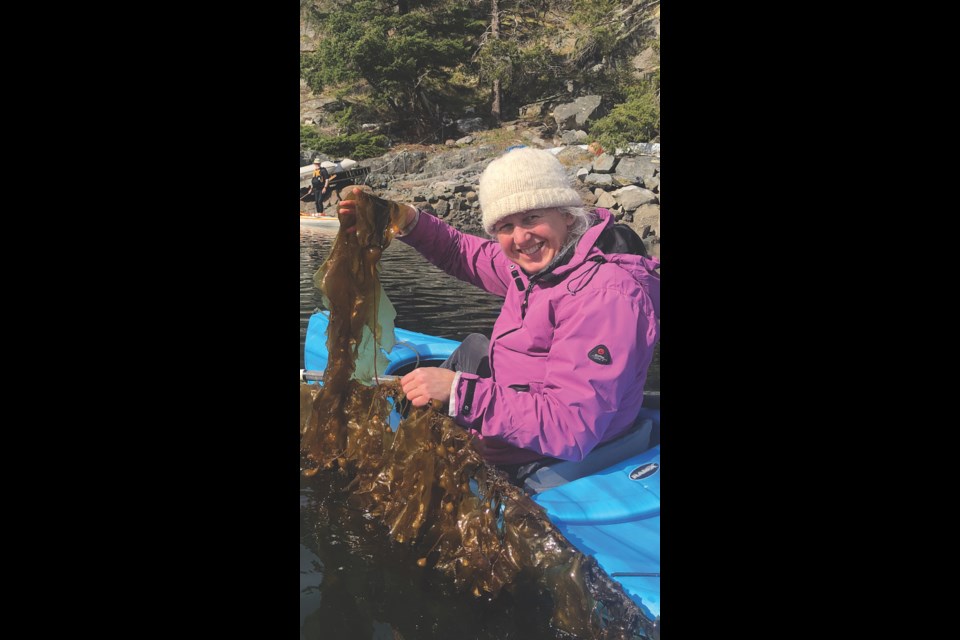The sea urchins eating up the already declining kelp along the Sunshine Coast are a problem. Forage fish, including young salmon, find refuge in the ribbons of greenery in the nearshore habitat. But, if the urchins can’t reach the kelp, they can’t eat it.
BC Conservation Foundation’s Vital Kelp Project is growing a “suspended kelp canopy refuge” for salmon at an oyster aquaculture lease at Nelson Island. Or, put another way, they’re growing kelp on lines.
Biologist Lee-Ann Ennis is heading up the project, which recently received a $5,000 grant from the Pacific Salmon Foundation’s Community Salmon Program.
In the 20 years she’s raised her family on the Coast, Ennis has watched the kelp disappear. She points to a few stressors that have affected stocks.
Starting in 2013, sea star wasting disease hit the West Coast of North America, causing a massive sea star die-off, including the large sunflower sea star species, which preys on sea urchins. “In the absence of that predator, the urchin population has exploded,” explained Ennis. Urchins eat kelp like Popeye eats spinach.
Then there are the warmer oceans. The kelp gets stressed when the water rises above 17 C and can have trouble germinating the next generation. The water in these parts is about two degrees warmer than the water in the Juan de Fuca area or up near Campbell River where there’s more current, explained Ennis.
Pollution, too, is a factor.
“I just really wish we could get [the kelp] back. It’s so important to take care of the nearshore habitat,” says Ennis. “That’s the key to helping salmon stocks recover is recovering their habitat.”
“When I stopped seeing plentiful kelp, I also stopped seeing plentiful salmon,” the aquaculture lease holder Ted Woodard said in the project’s grant application. “I would rather my grandchildren see kelp and salmon themselves, than me tell them stories that I remember kelp and salmon.”
While Ennis has been working on kelp cultivation for four years, she took a leave of absence from her job with the Loon Foundation and the Pender Harbour Ocean Discovery Station project a couple of years ago to care for her parents. She needed a project that was flexible but that kept her engaged in science and the ocean. Kelp cultivation fit the bill and she threw herself into the project.
Working with bull, sugar and ribbon kelp, Ennis taught herself how to cultivate kelp in a nursery, inoculating spools of twine with kelp seed, growing it in tanks over the fall. After babying the plants in the nursery, she outplants the kelp in the aquaculture lease (held by Ted Woodard) in the winter.
Ennis is also experimenting with inoculating gravel with kelp and planting the gravel.
Ennis is hoping to involve high school students and other community members and hoping to find other grants.
See more about the Vital Kelp Project at instagram.com/vitalkelp.



.jpg;w=120;h=80;mode=crop)